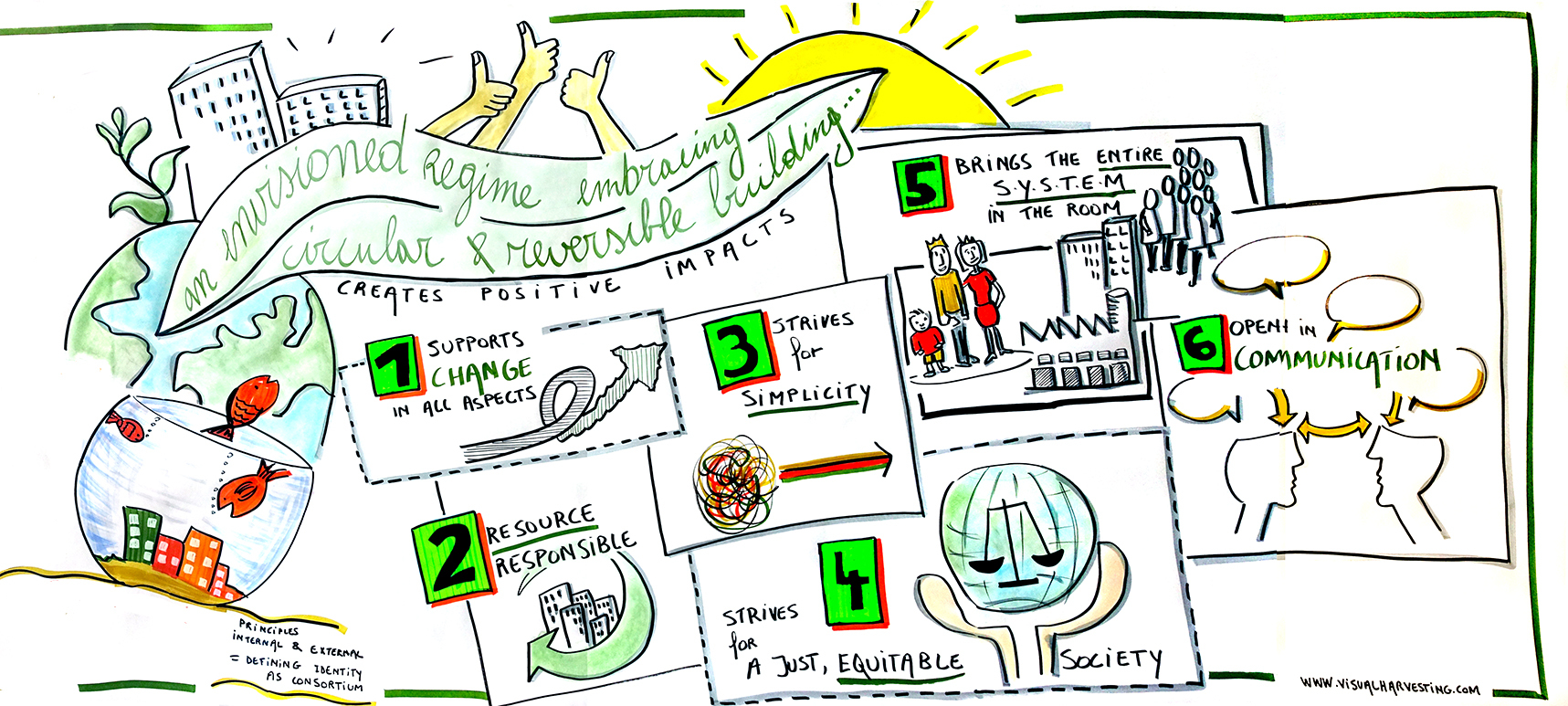BAMB Guiding principles

“Our vision of a world embracing circular and reversible building…”
Our built environment should create positive impacts for society. This implies that a new building practice embracing circular and reversible building…
...supports change in all aspects
- by making buildings and their constituting parts adaptable and/or fit for multiple uses;
- by designing buildings and their constituting parts in such a way that they can be upgraded to suit more complex constraints, but also ‘downgraded’ for more simple purposes;
- by allowing buildings and their constituting parts to be deconstructed, in order to facilitate reuse of building components;
- by supporting changing societal and individual requirements, throughout the service life of buildings and their constituting parts;
- by designing and building with the knowledge that every building is a temporary materialisation of human activities;
- by ensuring the built environment is resilient to unexpected change.
…is resource responsible
- by embracing the vision that everything is a resource for something else and waste doesn’t exist anymore;
- by monitoring that the use of natural resources is in balance with nature’s capacity of regeneration and takes into account the current and future availability of materials, water, energy and land.
…strives for simplicity
- by providing straightforward solutions, while acknowledging the inherent complexity of the built environment; its functions, the actors involved, the materials and components it is made of and the information, material and money flows it encompasses.
…strives for a just, equitable society
- by being fair for all current and future generations;
- by providing access to affordable buildings; taking into account added value for all stakeholders throughout their entire service life;
- by being user-centred instead of owner-centred;
- by including external (health and environmental) costs in market prices and decision-making processes;
- by empowering all people to engage in decisions on their living environment.
…brings the entire system in the room
- by involving every stakeholder in the creation, design, building, operation/use and repurposing processes, hence also the (end) users;
- by creating positive impacts for global/local environmental and health challenges.
…is open in communication
- by providing transparent information and correct/proper and digital data;
- by stimulating and contributing to learning;
- by providing continuous feedback to better inform decision-making;
- by teaching existing and new generations based on valuable present and past experiences.
